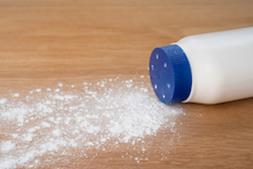Health
Talcum Powder and Cancer: What You Need to Know
by Mary Diagastino
Cancer risks seem to be everywhere today. Signs indicating potential exposure in stores and around town can cause some serious concerns in everyone’s minds. However, science is on your side. There are clear pathways to avoid cancer risks. Being aware of current research is part of your protective measures. If you’ve heard a lot about talcum powder and ovarian cancer, these subjects are worth a second look. Here is what you should know about talc and cancer as they’re discussed among academic circles. 
Understanding Talcum Powder’s Origins
Talcum powder comes from the Earth as magnesium silicate, reports IFL Science. In its raw form, talcum powder is referred to as talc. You’ve probably seen this ingredient in a number of products, from baby powder to paper.
It’s been mined for more than 100 years because talc can absorb moisture while providing a nearly friction-free environment. These features make talc and its powdered form very popular for personal hygiene.
Being Aware of Cosmetic Regulations
Besides baby powder, you can find talc in a wide variety of cosmetic products. From deodorant to lotion, talc offers its benefits within many items in your bathroom right now.
Because talc is used in products categorized as cosmetics, the federal government doesn’t regulate the ingredient use as carefully as medications. There can be a lot of talc in each product.
Some research has concluded that talcum powder used on or around the genitals can show up in tumors that develop later on in life. These conclusions aren’t hard-and-fast rules, however. Only a few people will have cancer in their lifetime with an association to talcum-powder use.
Examining the Recent Verdict
The company Johnson & Johnson was called to court on a case that associated daily, talcum-powder use with ovarian cancer. According to Recall Report, the company failed to warn consumers about a possible cancer link. They weren’t found responsible for the cancer development, however.
No researcher can conclusively say that talcum powder causes cancer. There are too many other factors that influence the disease, from eating habits to medication use. Some people might argue that the talc is mined alongside asbestos deposits, which have already been proven to cause lung cancer. At this point, talcum powder is safe to use because most mining occurs far from any asbestos. Consumers may want to limit or vary their powder use if they want to err on the side of caution.
Knowing About Alternatives
If you need a moisture-absorbing powder, turn to arrowroot or cornstarch. These products have no talc, but they provide the benefits that you desire. Look for other products that advertise themselves as talc-free. With some knowledge on the subject, you can find a safe alternative to talc-based products.
There will surely be more information about talcum powder and cancer risks in the future. Researchers continue to test and examine this relationship. If you’re concerned about cancer risk, turn to natural alternatives that have a proven history with good health. No one is immortal, but it’s possible to live well into your 70s and 80s with science on your side.
About the Author
Mary Diagastino is a team lead and communications director at Recall Report. She graduated from the University of Minnesota, Twin Cities Summa Cum Laude with a degree in English and creative writing and minor in marketing. Mary spent 8 years as an independent writer and columnist before coming on full time as a recall investigator and journalist for RR. Her specific areas of interest include health and fitness, law, lifestyle, poetry, alternative healing, legislation and more.
One thought on “Talcum Powder and Cancer: What You Need to Know”
Comments are closed.




Cornstarch is a proven winner!